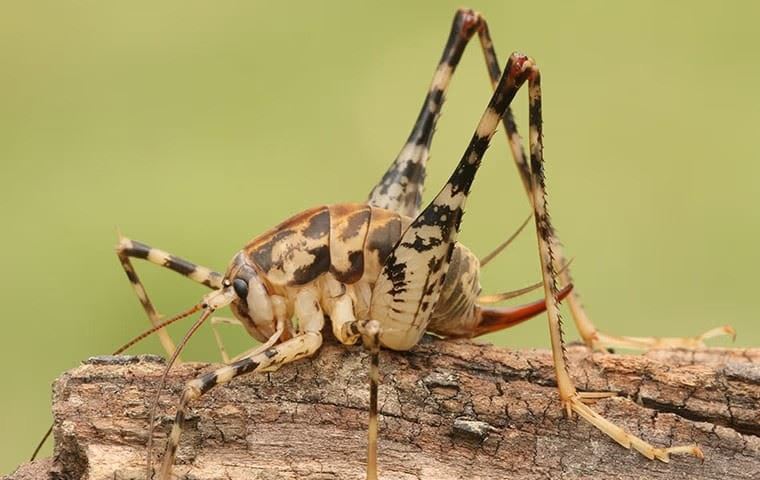
Camel Crickets
Get started with a free, no obligation quote!
Camel Cricket Identification & Prevention
Camel Cricket Identification & Prevention
Camel crickets are also commonly referred to as cave crickets because of their propensity to live in dark, cool cave-like environments.
Description

Camel crickets are light to dark brown, and they can be mottled and have dark banding on some of their body segments. Adults are wingless and grow to between 1/2 and 1 1/2 inches in length. Camel crickets get their name from their humpbacked appearance. These crickets have large, powerful legs that they use to jump away from predators and other dangers.
Biology and Behavior
- Camel crickets are nocturnal, meaning they hide during the day and come out a night to feed.
- Female camel crickets lay their eggs in the early spring, and the eggs hatch in April.
- Camel crickets are wingless, so they don't chirp like other species of crickets.
- Camel crickets seek shelter inside homes and other buildings during the winter months, and they overwinter as either adults or nymphs.
- Camel crickets enter inside homes and other buildings if the weather becomes too hot or dry for their liking.
- You will find camel crickets living underneath stones, woodpiles, mulch, landscaping ties, and fallen trees outside.
- Inside buildings, camel crickets like to hide and live in basements, crawl spaces, laundry rooms, and other areas that provide them with a dark, damp environment.
- Camel crickets are not known to carry or transmit any diseases that affect people.
- Inside homes, camel crickets may feed on and damage fabric items.

What's the Action Advantage?
Find Out What Makes Us Different!
-
Environmentally-Friendly Products Available
-
After-Hours Answering Service Available
-
70+ Certified Pest Management Professionals
-
Trusted by the Community Since 1946